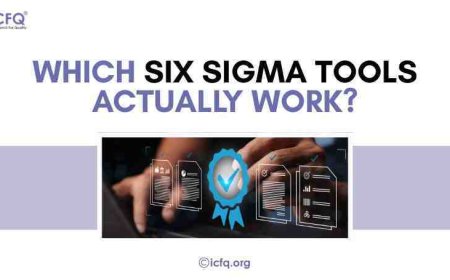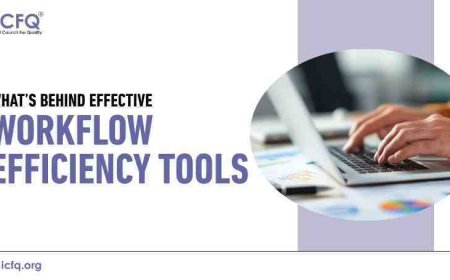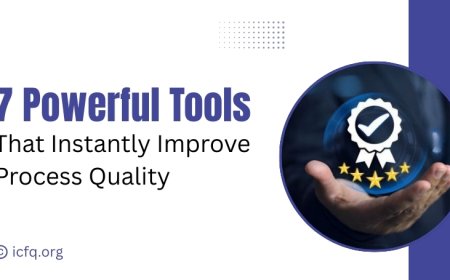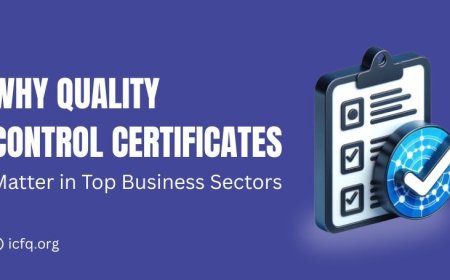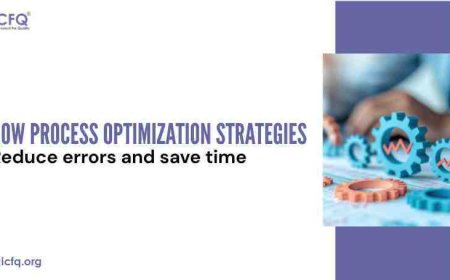Is Lean and Six Sigma Right for Small Business?
Discover if Lean and Six Sigma can help your small business grow, cut costs, and improve processes without added stress.

Do small businesses need Lean and Six Sigma? And if they do, can these methods still be effective even with limited personnel and a budget?
From my experience, the real value of Lean and Six Sigma is not in the name itself but in how you use it every day. Many people think these are just big-company tools, but in truth, they are about solving problems, reducing waste, and working more efficiently. For small businesses, this can mean faster service, fewer mistakes, and happier customers.
Business problems today are not the same as before. Customers expect speed, accuracy, and trust. Competition is tougher, and resources are tighter. That’s why small businesses that use Lean and Six Sigma, even in simple ways, often find they can grow stronger and stay ahead.
What Is Lean and Six Sigma?
Before deciding if Lean and Six Sigma are right for small businesses, it’s important to understand what is Lean and Six Sigma are in simple terms.
-
Lean focuses on removing waste, time, effort, or materials that don’t add value to the customer. For example, reducing unnecessary steps in customer service to make response times faster.
-
Six Sigma targets quality improvement by reducing errors and defects. It uses a data-driven approach, often summarized in the DMAIC framework (Define, Measure, Analyze, Improve, Control).
Together, Lean and Six Sigma form a powerful system: Lean speeds up processes, while Six Sigma ensures quality.
Why Lean and Six Sigma Matter
In today’s market, customers expect speed, quality, and reliability, all at the same time. With competitors only one click away, even a small delay or mistake can push customers toward another option.
This is where Lean and Six Sigma step in. For small businesses, they provide a structured way to:
-
Deliver faster without cutting corners – streamline operations so customers get what they need quickly.
-
Provide consistent quality that builds trust – fewer errors mean satisfied and loyal customers.
-
Operate efficiently, saving money for growth – reduced waste and smarter use of resources create space for reinvestment.
At its core, Lean and Six Sigma are not about big corporate jargon or complex charts. They are about creating a culture of continuous improvement, where every employee looks for ways to make work simpler, faster, and better. This mindset keeps your business strong, adaptable, and future-ready.
Why Small Businesses Should Care About Lean and Six Sigma
Many small businesses believe that methods like Lean and Six Sigma are reserved for large corporations with big budgets and massive teams. But the reality is very different. The principles of what is Lean and Six Sigma are flexible, and they can be scaled to fit businesses of any size, including startups, family-owned shops, or local service providers.
So, why should small businesses care? Because efficiency, cost savings, and customer satisfaction matter even more when resources are limited.
Key Benefits for Small Businesses:
-
Cost Savings: By identifying and reducing waste (like unused inventory, long waiting times, or duplicate work), small businesses can directly cut expenses without needing extra investments.
-
Customer Satisfaction: When mistakes are reduced, products and services become more reliable. Happier customers lead to repeat business, word-of-mouth marketing, and stronger loyalty.
-
Efficiency Gains: Lean tools streamline everyday processes, meaning less time is wasted on rework and confusion. This allows small businesses to serve more customers with the same resources.
-
Employee Engagement: Instead of simply following instructions, staff trained in Lean and Six Sigma approaches become problem-solvers. They feel more valued, which boosts morale and retention.
Challenges Small Businesses Face Without Lean and Six Sigma
Small businesses already deal with tight budgets, limited staff, and rising competition. Without the efficiency and structure provided by what is Lean and Six Sigma, these challenges often grow into long-term problems that hold back growth.
1. High Operational Costs
When waste isn’t managed, expenses silently pile up. Extra inventory, long processing times, or repeated mistakes all cost money. For a small business, even small losses can have a big impact on profits.
2. Poor Customer Experience
Errors in billing, late deliveries, or inconsistent service frustrate customers. Unlike large corporations that may absorb occasional mistakes, small businesses risk losing loyal clients permanently.
3. Low Productivity
Without streamlined processes, employees often spend more time fixing problems than creating value. This leads to stress, burnout, and wasted hours that small businesses simply can’t afford.
4. Difficulty Competing with Bigger Players
Larger companies use Lean and Six Sigma to stay agile and efficient. Small businesses that don’t adopt similar practices often find themselves struggling to keep up with faster, more reliable competitors.
5. Limited Growth Opportunities
When a business is stuck in “firefighting mode,” leaders can’t focus on scaling or innovation. Without Lean and Six Sigma, small businesses risk being stuck in survival mode instead of moving toward expansion.
Common Myths About Lean and Six Sigma in Small Businesses
-
“It’s too complex for us.”
Reality: Tools can be simplified. Even basic checklists or process mapping are part of Lean and Six Sigma.
-
“We can’t afford it.”
Reality: Lean starts with identifying waste, something that requires observation, not big budgets.
-
“It’s only for manufacturing.”
Reality: Service industries like healthcare, IT, and marketing also benefit.
How to Get Started with Lean and Six Sigma in Small Business
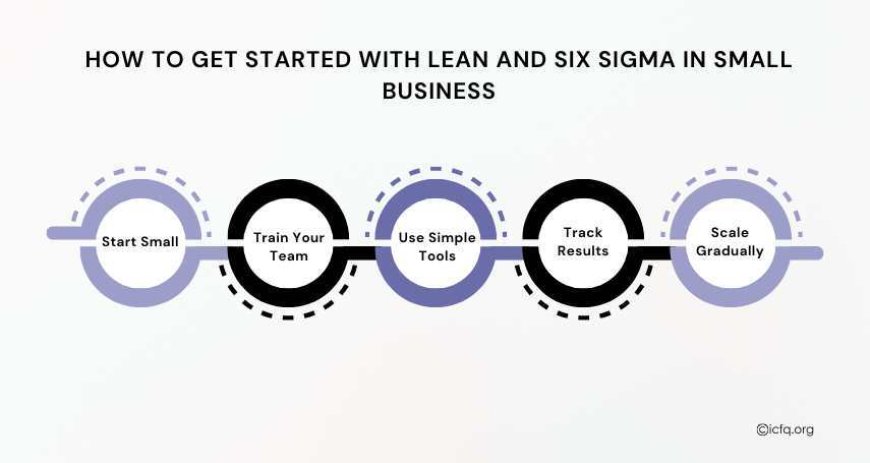
If you’re a small business owner curious about what lean and six sigma are and how they apply, here’s a simple roadmap:
-
Start Small: Identify one process to improve, such as order fulfillment or billing.
-
Train Your Team: Even basic awareness sessions help employees think in terms of quality and waste reduction.
-
Use Simple Tools: Flowcharts, checklists, and customer feedback surveys are Lean and Six Sigma tools.
-
Track Results: Compare “before and after” performance to show progress.
-
Scale Gradually: Apply lessons learned to other areas of the business.
Lean vs Six Sigma
|
Aspect |
Lean |
Six Sigma |
|
Main Focus |
Removing waste & speeding up processes |
Reducing variation & improving quality |
|
Primary Goal |
Efficiency and faster delivery |
Accuracy and fewer defects |
|
Approach |
Visual tools (5S, Kaizen, Kanban) |
Data-driven (DMAIC, statistical tools) |
|
Strength |
Improves flow & reduces delays |
Ensures consistency & reliability |
|
Outcome |
Saves time and cost |
Boosts customer trust with high quality |
|
Best For |
Streamlining everyday operations |
Solving critical errors in products/services |
So, is Lean and Six Sigma the right choice for small businesses? Absolutely.
They are not just for big companies. Any business, whether it’s a local bakery, a digital agency, or a small retailer, can apply these principles to reduce waste, improve quality, and build customer loyalty.
In simple terms, knowing what lean and six sigma are is about understanding how to run your business smarter, not harder. And for small businesses competing in a tough market, that could make all the difference between surviving and thriving.
Want to explore how Lean and Six Sigma can transform your small business?
Reach out to us today at [email protected] and take the first step toward smarter growth.


